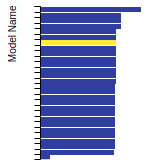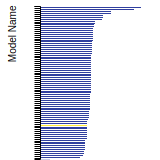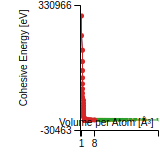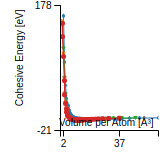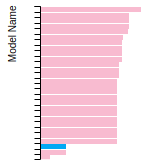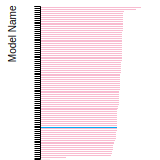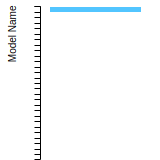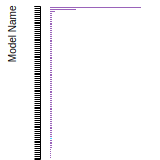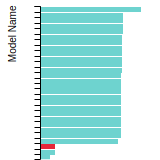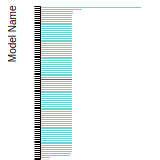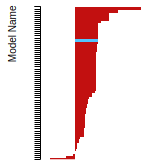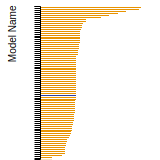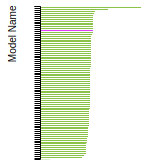Sim_LAMMPS_HybridOverlay_BelandLuOsetskiy_2016_CoNi__SM_445377835613_001
| Title
A single sentence description.
|
LAMMPS hybrid overlay EAM and ZBL potential for the Ni-Co system developed by Beland et al. (2016) v001 |
|---|---|
| Description | This is an EAM potential overlaid with a ZBL potential. The EAM potential combines previous Ni and Co potentials and the cross-term is fitted to reproduce the heat of mixing of Ni(x)-Co(1-x). |
| Species
The supported atomic species.
| Co, Ni |
| Disclaimer
A statement of applicability provided by the contributor, informing users of the intended use of this KIM Item.
|
None |
| Content Origin | https://www.ctcms.nist.gov/potentials/entry/2016--Beland-L-K-Lu-C-Osetskiy-Y-N-et-al--Ni-Co/ |
| Contributor |
I Nikiforov |
| Maintainer |
I Nikiforov |
| Developer |
Laurent K. Béland Chenyang Lu Yuri N. Osetskiy |
| Published on KIM | 2023 |
| How to Cite |
This Simulator Model originally published in [1] is archived in OpenKIM [2-4]. [1] Béland LK, Lu C, Osetskiy YN, Samolyuk GD, Caro A, Wang L, et al. Features of primary damage by high energy displacement cascades in concentrated Ni-based alloys. Journal of Applied Physics [Internet]. 2016Feb;119(8). Available from: https://www.osti.gov/biblio/1239766 doi:10.1063/1.4942533 — (Primary Source) A primary source is a reference directly related to the item documenting its development, as opposed to other sources that are provided as background information. [2] Béland LK, Lu C, Osetskiy YN. LAMMPS hybrid overlay EAM and ZBL potential for the Ni-Co system developed by Beland et al. (2016) v001. OpenKIM; 2023. doi:10.25950/4676f4ff [3] Tadmor EB, Elliott RS, Sethna JP, Miller RE, Becker CA. The potential of atomistic simulations and the Knowledgebase of Interatomic Models. JOM. 2011;63(7):17. doi:10.1007/s11837-011-0102-6 [4] Elliott RS, Tadmor EB. Knowledgebase of Interatomic Models (KIM) Application Programming Interface (API). OpenKIM; 2011. doi:10.25950/ff8f563a Click here to download the above citation in BibTeX format. |
| Citations
This panel presents information regarding the papers that have cited the interatomic potential (IP) whose page you are on. The OpenKIM machine learning based Deep Citation framework is used to determine whether the citing article actually used the IP in computations (denoted by "USED") or only provides it as a background citation (denoted by "NOT USED"). For more details on Deep Citation and how to work with this panel, click the documentation link at the top of the panel. The word cloud to the right is generated from the abstracts of IP principle source(s) (given below in "How to Cite") and the citing articles that were determined to have used the IP in order to provide users with a quick sense of the types of physical phenomena to which this IP is applied. The bar chart shows the number of articles that cited the IP per year. Each bar is divided into green (articles that USED the IP) and blue (articles that did NOT USE the IP). Users are encouraged to correct Deep Citation errors in determination by clicking the speech icon next to a citing article and providing updated information. This will be integrated into the next Deep Citation learning cycle, which occurs on a regular basis. OpenKIM acknowledges the support of the Allen Institute for AI through the Semantic Scholar project for providing citation information and full text of articles when available, which are used to train the Deep Citation ML algorithm. |
This panel provides information on past usage of this interatomic potential (IP) powered by the OpenKIM Deep Citation framework. The word cloud indicates typical applications of the potential. The bar chart shows citations per year of this IP (bars are divided into articles that used the IP (green) and those that did not (blue)). The complete list of articles that cited this IP is provided below along with the Deep Citation determination on usage. See the Deep Citation documentation for more information. 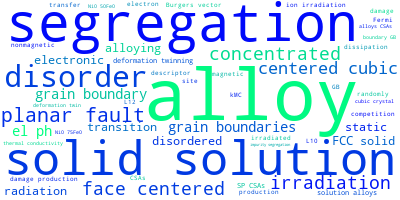
50 Citations (37 used)
Help us to determine which of the papers that cite this potential actually used it to perform calculations. If you know, click the .
USED (high confidence) R. Jagatramka, J. Ahmed, and M. Daly, “The evolution of deformation twinning microstructures in random face-centered cubic solid solutions,” Journal of Applied Physics. 2023. link Times cited: 0 Abstract: The varied atomic arrangements in face-centered cubic (FCC) … read more USED (high confidence) M. Wagih, P. M. Larsen, and C. Schuh, “Learning grain boundary segregation energy spectra in polycrystals,” Nature Communications. 2020. link Times cited: 62 USED (high confidence) A. A. Deshmukh and S. Pal, “Dynamic probing of structural evolution for Co50Ni50 metallic glass during pressurized cooling using atomistic simulation,” Journal of Molecular Modeling. 2020. link Times cited: 1 USED (high confidence) G. Arora, K. Rawat, and D. Aidhy, “Effect of atomic order/disorder on Cr segregation in Ni-Fe alloys,” Journal of Applied Physics. 2018. link Times cited: 4 Abstract: Recent irradiation experiments on concentrated random solid … read more USED (high confidence) Y. Zhang et al., “Influence of chemical disorder on energy dissipation and defect evolution in advanced alloys,” Journal of Materials Research. 2016. link Times cited: 103 Abstract: Historically, alloy development with better radiation perfor… read more USED (high confidence) G. Samolyuk, L. Béland, G. M. Stocks, and R. Stoller, “Electron–phonon coupling in Ni-based binary alloys with application to displacement cascade modeling,” Journal of Physics: Condensed Matter. 2016. link Times cited: 36 Abstract: Energy transfer between lattice atoms and electrons is an im… read more USED (low confidence) J. Li, X. Yang, P. Wang, and Q. Qian, “Interactions between displacement cascades and grain boundaries in NiFe single-phase concentrated solid solution alloys,” Nuclear Instruments and Methods in Physics Research Section B: Beam Interactions with Materials and Atoms. 2023. link Times cited: 0 USED (low confidence) X. Yuan, H. Huang, Y. Zhong, B. Cai, Z. Liu, and Q. Peng, “The Primary Irradiation Damage of Hydrogen-Accumulated Nickel: An Atomistic Study,” Materials. 2023. link Times cited: 0 Abstract: Nickel-based alloys have demonstrated significant promise as… read more USED (low confidence) M. Fullarton, G. Nandipati, D. Senor, A. Casella, and R. Devanathan, “Molecular Dynamics Study of Primary Damage in the Near-Surface Region in Nickel,” Journal of Nuclear Materials. 2023. link Times cited: 0 USED (low confidence) L. Liu et al., “Displacement cascades database from molecular dynamic simulations in tungsten,” Journal of Nuclear Materials. 2023. link Times cited: 1 USED (low confidence) B. Waters, D. S. Karls, I. Nikiforov, R. Elliott, E. Tadmor, and B. Runnels, “Automated determination of grain boundary energy and potential-dependence using the OpenKIM framework,” Computational Materials Science. 2022. link Times cited: 5 USED (low confidence) O. Celebi, A. Mohammed, J. Krogstad, and H. Sehitoglu, “Evolving dislocation cores at Twin Boundaries: Theory of CRSS Elevation,” International Journal of Plasticity. 2021. link Times cited: 9 USED (low confidence) S. Zhao, Y. Xiong, S.-hui Ma, J. Zhang, B. Xu, and J. Kai, “Defect accumulation and evolution in refractory multi-principal element alloys,” Acta Materialia. 2021. link Times cited: 30 USED (low confidence) G. Ge et al., “Effects of order and disorder on the defect evolution of NiFe binary alloys from atomistic simulations,” Nuclear Instruments and Methods in Physics Research Section B: Beam Interactions with Materials and Atoms. 2021. link Times cited: 4 USED (low confidence) O. Deluigi, R. Pasianot, F. J. Valencia, A. Caro, D. Farkas, and E. Bringa, “Simulations of primary damage in a High Entropy Alloy: Probing enhanced radiation resistance,” Acta Materialia. 2021. link Times cited: 81 USED (low confidence) S. Zhao, “Influence of temperature and alloying elements on the threshold displacement energies in concentrated Ni–Fe–Cr alloys*,” Chinese Physics B. 2021. link Times cited: 3 USED (low confidence) H. Huang, B. Cai, H. Li, X. Yuan, and Y. Jin, “Atomistic simulation of energetic displacement cascades near an Ni–graphene interface,” Journal of Supercritical Fluids. 2021. link Times cited: 10 USED (low confidence) Q. Guo, K. Lai, Y. Tang, H. Wen, and B. Wang, “Effects of applied strain on defect production and clustering in FCC Ni,” Journal of Nuclear Materials. 2020. link Times cited: 7 USED (low confidence) C. Shan et al., “Molecular dynamics simulations of radiation damage generation and dislocation loop evolution in Ni and binary Ni-based alloys,” Computational Materials Science. 2020. link Times cited: 15 USED (low confidence) T. Yang et al., “Structural damage and phase stability of Al0.3CoCrFeNi high entropy alloy under high temperature ion irradiation,” Acta Materialia. 2020. link Times cited: 74 USED (low confidence) Y. Lin et al., “Enhanced Radiation Tolerance of the Ni-Co-Cr-Fe High-Entropy Alloy as Revealed from Primary Damage,” MatSciRN: Other Mechanical Properties & Deformation of Materials (Topic). 2020. link Times cited: 93 Abstract: High-entropy alloys (HEAs) have received much attention for … read more USED (low confidence) S. Zhao, B. Liu, G. Samolyuk, Y. Zhang, and W. J. Weber, “Alloying effects on low‒energy recoil events in concentrated solid‒solution alloys,” Journal of Nuclear Materials. 2020. link Times cited: 12 USED (low confidence) N. Zhou, F. C. Wu, Y. Zhu, X. Li, Q. Wu, and H. Wu, “Defect production and segregation induced by collision cascades in U-10Zr alloy,” Journal of Nuclear Materials. 2019. link Times cited: 6 USED (low confidence) W. Yang, P. Chen, W. Lai, and Z. Zhang, “Molecular dynamics simulations of displacement cascade and threshold energy in ordered alloy Al3U,” Nuclear Instruments and Methods in Physics Research Section B: Beam Interactions with Materials and Atoms. 2019. link Times cited: 3 USED (low confidence) M. He, C. Wu, M. Shugaev, G. Samolyuk, and L. Zhigilei, “Computational Study of Short-Pulse Laser-Induced Generation of Crystal Defects in Ni-Based Single-Phase Binary Solid–Solution Alloys,” The Journal of Physical Chemistry C. 2019. link Times cited: 20 Abstract: Single-phase concentrated solid–solution alloys exhibit enha… read more USED (low confidence) Y. Osetsky, A. Barashev, and Y. Zhang, “On the mobility of defect clusters and their effect on microstructure evolution in fcc Ni under irradiation,” Materialia. 2018. link Times cited: 7 USED (low confidence) N. T. Trung, H. Phuong, M. Starostenkov, V. Romanenko, and V. Popov, “Threshold displacement energy in Ni, Al and B2 NiAl,” IOP Conference Series: Materials Science and Engineering. 2018. link Times cited: 18 Abstract: For simulation of radiation effects and defects in the Ni-Al… read more USED (low confidence) T. Yang, C. Li, S. Zinkle, S. Zhao, H. Bei, and Y. Zhang, “Irradiation responses and defect behavior of single-phase concentrated solid solution alloys,” Journal of Materials Research. 2018. link Times cited: 48 Abstract: Single-phase concentrated solid solution alloys (SP-CSAs) ar… read more USED (low confidence) A. Arjhangmehr and S. Feghhi, “A comparative study of primary damage state in Ni and NiCr/NiFe with a model grain boundary structure,” Computational Materials Science. 2018. link Times cited: 5 USED (low confidence) M. Jin, P. Cao, and M. Short, “Thermodynamic mixing energy and heterogeneous diffusion uncover the mechanisms of radiation damage reduction in single-phase Ni-Fe alloys,” Acta Materialia. 2018. link Times cited: 30 USED (low confidence) S. Shi, M. He, K. Jin, H. Bei, and I. Robertson, “Evolution of ion damage at 773K in Ni- containing concentrated solid-solution alloys,” Journal of Nuclear Materials. 2018. link Times cited: 27 USED (low confidence) L. Béland et al., “Accurate classical short-range forces for the study of collision cascades in Fe-Ni-Cr,” Comput. Phys. Commun. 2017. link Times cited: 34 USED (low confidence) M. Rafique, N. Afzal, and R. Ahmad, “Impact of 18 MeV He+ ions on the morphological and structural properties of pure Fe,” Materials Research Express. 2017. link Times cited: 4 Abstract: In the present work, morphological and structural changes in… read more USED (low confidence) S. Zhao, G. Velişa, H. Xue, H. Bei, W. J. Weber, and Y. Zhang, “Suppression of vacancy cluster growth in concentrated solid solution alloys,” Acta Materialia. 2017. link Times cited: 41 USED (low confidence) I. C. Njifon and E. Torres, “Cumulative effects of primary radiation damage in alloy 800H: An atomistic simulation study,” Journal of Nuclear Materials. 2023. link Times cited: 0 USED (low confidence) C. Yang, Y. Pachaury, A. El-Azab, and J. Wharry, “Molecular dynamics simulation of vacancy and void effects on strain-induced martensitic transformations in Fe-50 at.% Ni model concentrated solid solution alloy,” Scripta Materialia. 2022. link Times cited: 7 USED (low confidence) K. Zolnikov, A. Korchuganov, D. Kryzhevich, and A. Nikonov, “Influence of irradiation on mobility of edge dislocations in Fe–10Cr alloy.” 2018. link Times cited: 0 NOT USED (low confidence) R. Jagatramka, C. Wang, and M. Daly, “An analytical method to quantify the statistics of energy landscapes in random solid solutions,” Computational Materials Science. 2022. link Times cited: 1 NOT USED (low confidence) E. Pickering, A. Carruthers, P. Barron, S. Middleburgh, D. J. Armstrong, and A. Gandy, “High-Entropy Alloys for Advanced Nuclear Applications,” Entropy. 2021. link Times cited: 97 Abstract: The expanded compositional freedom afforded by high-entropy … read more NOT USED (high confidence) Q. Yang and P. Olsson, “Full energy range primary radiation damage model,” Physical Review Materials. 2021. link Times cited: 9 Abstract: A full energy range primary radiation damage model is presen… read more NOT USED (high confidence) Z. Zhu, H. Huang, O. Muránsky, J. Liu, Z. Zhu, and Y. Huang, “On the irradiation tolerance of nano-grained Ni–Mo–Cr alloy: 1 MeV He+ irradiation experiment,” Journal of Nuclear Materials. 2020. link Times cited: 23 NOT USED (high confidence) N. T. Trung, H. Phuong, and M. Starostenkov, “Molecular dynamics simulation of displacement cascades in B2 NiAl,” Letters on Materials. 2019. link Times cited: 5 Abstract: This study is focused on the behavior of B2 NiAl alloy under… read more NOT USED (high confidence) C. Dai, F. Long, P. Saidi, L. Béland, Z. Yao, and M. Daymond, “Primary damage production in the presence of extended defects and growth of vacancy-type dislocation loops in hcp zirconium,” Physical Review Materials. 2019. link Times cited: 13 Abstract: Production rates in long-term predictive radiation damage ac… read more NOT USED (high confidence) Y. Zhang, S. Zhao, W. J. Weber, K. Nordlund, F. Granberg, and F. Djurabekova, “Atomic-level heterogeneity and defect dynamics in concentrated solid-solution alloys,” Current Opinion in Solid State & Materials Science. 2017. link Times cited: 142 NOT USED (high confidence) S. Zhao, W. J. Weber, and Y. Zhang, “Unique Challenges for Modeling Defect Dynamics in Concentrated Solid-Solution Alloys,” JOM. 2017. link Times cited: 33 NOT USED (high confidence) D. Li, B. Reich, and D. Brenner, “Statistical and image analysis for characterizing simulated atomic-scale damage in crystals,” Computational Materials Science. 2017. link Times cited: 2 NOT USED (high confidence) T.-ni Yang et al., “The effect of injected interstitials on void formation in self-ion irradiated nickel containing concentrated solid solution alloys,” Journal of Nuclear Materials. 2017. link Times cited: 48 NOT USED (high confidence) S. Zhao, Y. Osetsky, and Y. Zhang, “Preferential diffusion in concentrated solid solution alloys: NiFe, NiCo and NiCoCr ☆,” Acta Materialia. 2017. link Times cited: 120 NOT USED (high confidence) L. Béland, Y. Osetsky, and R. Stoller, “The effect of alloying nickel with iron on the supersonic ballistic stage of high energy displacement cascades,” Acta Materialia. 2016. link Times cited: 28 NOT USED (high confidence) L. Béland, G. Samolyuk, and R. Stoller, “Differences in the accumulation of ion-beam damage in Ni and NiFe explained by atomistic simulations,” Journal of Alloys and Compounds. 2016. link Times cited: 30 |
| Funding |
Funder: Basic Energy Sciences Funder: Fonds Québécois de la Recherche sur la Nature et les Technologies |
| Short KIM ID
The unique KIM identifier code.
| SM_445377835613_001 |
| Extended KIM ID
The long form of the KIM ID including a human readable prefix (100 characters max), two underscores, and the Short KIM ID. Extended KIM IDs can only contain alpha-numeric characters (letters and digits) and underscores and must begin with a letter.
| Sim_LAMMPS_HybridOverlay_BelandLuOsetskiy_2016_CoNi__SM_445377835613_001 |
| DOI |
10.25950/4676f4ff https://doi.org/10.25950/4676f4ff https://commons.datacite.org/doi.org/10.25950/4676f4ff |
| KIM Item Type | Simulator Model |
| KIM API Version | 2.3 |
| Simulator Name
The name of the simulator as defined in kimspec.edn.
| LAMMPS |
| Potential Type | hybrid |
| Simulator Potential | hybrid/overlay |
| Run Compatibility | portable-models |
| Previous Version | Sim_LAMMPS_HybridOverlay_BelandLuOsetskiy_2016_CoNi__SM_445377835613_000 |
| Grade | Name | Category | Brief Description | Full Results | Aux File(s) |
|---|---|---|---|---|---|
| P | vc-species-supported-as-stated | mandatory | The model supports all species it claims to support; see full description. |
Results | Files |
| P | vc-periodicity-support | mandatory | Periodic boundary conditions are handled correctly; see full description. |
Results | Files |
| P | vc-permutation-symmetry | mandatory | Total energy and forces are unchanged when swapping atoms of the same species; see full description. |
Results | Files |
| A | vc-forces-numerical-derivative | consistency | Forces computed by the model agree with numerical derivatives of the energy; see full description. |
Results | Files |
| F | vc-dimer-continuity-c1 | informational | The energy versus separation relation of a pair of atoms is C1 continuous (i.e. the function and its first derivative are continuous); see full description. |
Results | Files |
| P | vc-objectivity | informational | Total energy is unchanged and forces transform correctly under rigid-body translation and rotation; see full description. |
Results | Files |
| P | vc-inversion-symmetry | informational | Total energy is unchanged and forces change sign when inverting a configuration through the origin; see full description. |
Results | Files |
| F | vc-memory-leak | informational | The model code does not have memory leaks (i.e. it releases all allocated memory at the end); see full description. |
Results | Files |
| N/A | vc-thread-safe | mandatory | The model returns the same energy and forces when computed in serial and when using parallel threads for a set of configurations. Note that this is not a guarantee of thread safety; see full description. |
Results | Files |
BCC Lattice Constant
This bar chart plot shows the mono-atomic body-centered cubic (bcc) lattice constant predicted by the current model (shown in the unique color) compared with the predictions for all other models in the OpenKIM Repository that support the species. The vertical bars show the average and standard deviation (one sigma) bounds for all model predictions. Graphs are generated for each species supported by the model.
Cohesive Energy Graph
This graph shows the cohesive energy versus volume-per-atom for the current mode for four mono-atomic cubic phases (body-centered cubic (bcc), face-centered cubic (fcc), simple cubic (sc), and diamond). The curve with the lowest minimum is the ground state of the crystal if stable. (The crystal structure is enforced in these calculations, so the phase may not be stable.) Graphs are generated for each species supported by the model.
Diamond Lattice Constant
This bar chart plot shows the mono-atomic face-centered diamond lattice constant predicted by the current model (shown in the unique color) compared with the predictions for all other models in the OpenKIM Repository that support the species. The vertical bars show the average and standard deviation (one sigma) bounds for all model predictions. Graphs are generated for each species supported by the model.
Dislocation Core Energies
This graph shows the dislocation core energy of a cubic crystal at zero temperature and pressure for a specific set of dislocation core cutoff radii. After obtaining the total energy of the system from conjugate gradient minimizations, non-singular, isotropic and anisotropic elasticity are applied to obtain the dislocation core energy for each of these supercells with different dipole distances. Graphs are generated for each species supported by the model.
(No matching species)FCC Elastic Constants
This bar chart plot shows the mono-atomic face-centered cubic (fcc) elastic constants predicted by the current model (shown in blue) compared with the predictions for all other models in the OpenKIM Repository that support the species. The vertical bars show the average and standard deviation (one sigma) bounds for all model predictions. Graphs are generated for each species supported by the model.
FCC Lattice Constant
This bar chart plot shows the mono-atomic face-centered cubic (fcc) lattice constant predicted by the current model (shown in red) compared with the predictions for all other models in the OpenKIM Repository that support the species. The vertical bars show the average and standard deviation (one sigma) bounds for all model predictions. Graphs are generated for each species supported by the model.
FCC Stacking Fault Energies
This bar chart plot shows the intrinsic and extrinsic stacking fault energies as well as the unstable stacking and unstable twinning energies for face-centered cubic (fcc) predicted by the current model (shown in blue) compared with the predictions for all other models in the OpenKIM Repository that support the species. The vertical bars show the average and standard deviation (one sigma) bounds for all model predictions. Graphs are generated for each species supported by the model.
FCC Surface Energies
This bar chart plot shows the mono-atomic face-centered cubic (fcc) relaxed surface energies predicted by the current model (shown in blue) compared with the predictions for all other models in the OpenKIM Repository that support the species. The vertical bars show the average and standard deviation (one sigma) bounds for all model predictions. Graphs are generated for each species supported by the model.
SC Lattice Constant
This bar chart plot shows the mono-atomic simple cubic (sc) lattice constant predicted by the current model (shown in the unique color) compared with the predictions for all other models in the OpenKIM Repository that support the species. The vertical bars show the average and standard deviation (one sigma) bounds for all model predictions. Graphs are generated for each species supported by the model.
Cubic Crystal Basic Properties Table
Species: CoSpecies: Ni
Creators:
Contributor: karls
Publication Year: 2019
DOI: https://doi.org/10.25950/64cb38c5
This Test Driver uses LAMMPS to compute the cohesive energy of a given monoatomic cubic lattice (fcc, bcc, sc, or diamond) at a variety of lattice spacings. The lattice spacings range from a_min (=a_min_frac*a_0) to a_max (=a_max_frac*a_0) where a_0, a_min_frac, and a_max_frac are read from stdin (a_0 is typically approximately equal to the equilibrium lattice constant). The precise scaling and number of lattice spacings sampled between a_min and a_0 (a_0 and a_max) is specified by two additional parameters passed from stdin: N_lower and samplespacing_lower (N_upper and samplespacing_upper). Please see README.txt for further details.
| Test | Test Results | Link to Test Results page | Benchmark time
Usertime multiplied by the Whetstone Benchmark. This number can be used (approximately) to compare the performance of different models independently of the architecture on which the test was run.
Measured in Millions of Whetstone Instructions (MWI) |
|---|---|---|---|
| Cohesive energy versus lattice constant curve for bcc Co v004 | view | 7436 | |
| Cohesive energy versus lattice constant curve for bcc Ni v004 | view | 7657 | |
| Cohesive energy versus lattice constant curve for diamond Co v004 | view | 8025 | |
| Cohesive energy versus lattice constant curve for diamond Ni v004 | view | 7583 | |
| Cohesive energy versus lattice constant curve for fcc Co v004 | view | 7509 | |
| Cohesive energy versus lattice constant curve for fcc Ni v004 | view | 7804 | |
| Cohesive energy versus lattice constant curve for sc Co v004 | view | 7362 | |
| Cohesive energy versus lattice constant curve for sc Ni v004 | view | 7877 |
Creators: Junhao Li and Ellad Tadmor
Contributor: tadmor
Publication Year: 2019
DOI: https://doi.org/10.25950/5853fb8f
Computes the cubic elastic constants for some common crystal types (fcc, bcc, sc, diamond) by calculating the hessian of the energy density with respect to strain. An estimate of the error associated with the numerical differentiation performed is reported.
| Test | Test Results | Link to Test Results page | Benchmark time
Usertime multiplied by the Whetstone Benchmark. This number can be used (approximately) to compare the performance of different models independently of the architecture on which the test was run.
Measured in Millions of Whetstone Instructions (MWI) |
|---|---|---|---|
| Elastic constants for bcc Co at zero temperature v006 | view | 81130 | |
| Elastic constants for bcc Ni at zero temperature v006 | view | 38209 | |
| Elastic constants for diamond Co at zero temperature v001 | view | 863716 | |
| Elastic constants for diamond Ni at zero temperature v001 | view | 395195 | |
| Elastic constants for fcc Co at zero temperature v006 | view | 72737 | |
| Elastic constants for fcc Ni at zero temperature v006 | view | 61031 | |
| Elastic constants for sc Co at zero temperature v006 | view | 50872 | |
| Elastic constants for sc Ni at zero temperature v006 | view | 49547 |
Creators:
Contributor: ilia
Publication Year: 2024
DOI: https://doi.org/10.25950/2f2c4ad3
Computes the equilibrium crystal structure and energy for an arbitrary crystal at zero temperature and applied stress by performing symmetry-constrained relaxation. The crystal structure is specified using the AFLOW prototype designation. Multiple sets of free parameters corresponding to the crystal prototype may be specified as initial guesses for structure optimization. No guarantee is made regarding the stability of computed equilibria, nor that any are the ground state.
| Test | Test Results | Link to Test Results page | Benchmark time
Usertime multiplied by the Whetstone Benchmark. This number can be used (approximately) to compare the performance of different models independently of the architecture on which the test was run.
Measured in Millions of Whetstone Instructions (MWI) |
|---|---|---|---|
| Equilibrium crystal structure and energy for CoNi in AFLOW crystal prototype A3B_cP4_221_c_a v002 | view | 108517 | |
| Equilibrium crystal structure and energy for CoNi in AFLOW crystal prototype AB_cP2_221_a_b v002 | view | 89596 |
Creators:
Contributor: ilia
Publication Year: 2025
DOI: https://doi.org/10.25950/866c7cfa
Computes the equilibrium crystal structure and energy for an arbitrary crystal at zero temperature and applied stress by performing symmetry-constrained relaxation. The crystal structure is specified using the AFLOW prototype designation. Multiple sets of free parameters corresponding to the crystal prototype may be specified as initial guesses for structure optimization. No guarantee is made regarding the stability of computed equilibria, nor that any are the ground state.
Creators: Daniel S. Karls and Junhao Li
Contributor: karls
Publication Year: 2019
DOI: https://doi.org/10.25950/2765e3bf
Equilibrium lattice constant and cohesive energy of a cubic lattice at zero temperature and pressure.
| Test | Test Results | Link to Test Results page | Benchmark time
Usertime multiplied by the Whetstone Benchmark. This number can be used (approximately) to compare the performance of different models independently of the architecture on which the test was run.
Measured in Millions of Whetstone Instructions (MWI) |
|---|---|---|---|
| Equilibrium zero-temperature lattice constant for bcc Co v007 | view | 40933 | |
| Equilibrium zero-temperature lattice constant for bcc Ni v007 | view | 39534 | |
| Equilibrium zero-temperature lattice constant for diamond Co v007 | view | 67804 | |
| Equilibrium zero-temperature lattice constant for diamond Ni v007 | view | 42185 | |
| Equilibrium zero-temperature lattice constant for fcc Co v007 | view | 50430 | |
| Equilibrium zero-temperature lattice constant for fcc Ni v007 | view | 34822 | |
| Equilibrium zero-temperature lattice constant for sc Co v007 | view | 41816 | |
| Equilibrium zero-temperature lattice constant for sc Ni v007 | view | 38430 |
Creators: Daniel S. Karls and Junhao Li
Contributor: karls
Publication Year: 2019
DOI: https://doi.org/10.25950/c339ca32
Calculates lattice constant of hexagonal bulk structures at zero temperature and pressure by using simplex minimization to minimize the potential energy.
| Test | Test Results | Link to Test Results page | Benchmark time
Usertime multiplied by the Whetstone Benchmark. This number can be used (approximately) to compare the performance of different models independently of the architecture on which the test was run.
Measured in Millions of Whetstone Instructions (MWI) |
|---|---|---|---|
| Equilibrium lattice constants for hcp Co v005 | view | 458582 | |
| Equilibrium lattice constants for hcp Ni v005 | view | 462337 |
Creators:
Contributor: mjwen
Publication Year: 2024
DOI: https://doi.org/10.25950/9d9822ec
This Test Driver uses LAMMPS to compute the linear thermal expansion coefficient at a finite temperature under a given pressure for a cubic lattice (fcc, bcc, sc, diamond) of a single given species.
| Test | Test Results | Link to Test Results page | Benchmark time
Usertime multiplied by the Whetstone Benchmark. This number can be used (approximately) to compare the performance of different models independently of the architecture on which the test was run.
Measured in Millions of Whetstone Instructions (MWI) |
|---|---|---|---|
| Linear thermal expansion coefficient of fcc Ni at 293.15 K under a pressure of 0 MPa v002 | view | 674801 |
Creators:
Contributor: SubrahmanyamPattamatta
Publication Year: 2019
DOI: https://doi.org/10.25950/b4cfaf9a
Intrinsic and extrinsic stacking fault energies, unstable stacking fault energy, unstable twinning energy, stacking fault energy as a function of fractional displacement, and gamma surface for a monoatomic FCC lattice at zero temperature and pressure.
| Test | Test Results | Link to Test Results page | Benchmark time
Usertime multiplied by the Whetstone Benchmark. This number can be used (approximately) to compare the performance of different models independently of the architecture on which the test was run.
Measured in Millions of Whetstone Instructions (MWI) |
|---|---|---|---|
| Stacking and twinning fault energies for fcc Ni v002 | view | 9518615 |
Creators: Matt Bierbaum
Contributor: mattbierbaum
Publication Year: 2019
DOI: https://doi.org/10.25950/6c43a4e6
Calculates the surface energy of several high symmetry surfaces and produces a broken-bond model fit. In latex form, the fit equations are given by:
E_{FCC} (\vec{n}) = p_1 (4 \left( |x+y| + |x-y| + |x+z| + |x-z| + |z+y| +|z-y|\right)) + p_2 (8 \left( |x| + |y| + |z|\right)) + p_3 (2 ( |x+ 2y + z| + |x+2y-z| + |x-2y + z| + |x-2y-z| + |2x+y+z| + |2x+y-z| +|2x-y+z| +|2x-y-z| +|x+y+2z| +|x+y-2z| +|x-y+2z| +|x-y-2z| ) + c
E_{BCC} (\vec{n}) = p_1 (6 \left( | x+y+z| + |x+y-z| + |-x+y-z| + |x-y+z| \right)) + p_2 (8 \left( |x| + |y| + |z|\right)) + p_3 (4 \left( |x+y| + |x-y| + |x+z| + |x-z| + |z+y| +|z-y|\right)) +c.
In Python, these two fits take the following form:
def BrokenBondFCC(params, index):
import numpy
x, y, z = index
x = x / numpy.sqrt(x**2.+y**2.+z**2.)
y = y / numpy.sqrt(x**2.+y**2.+z**2.)
z = z / numpy.sqrt(x**2.+y**2.+z**2.)
return params[0]*4* (abs(x+y) + abs(x-y) + abs(x+z) + abs(x-z) + abs(z+y) + abs(z-y)) + params[1]*8*(abs(x) + abs(y) + abs(z)) + params[2]*(abs(x+2*y+z) + abs(x+2*y-z) +abs(x-2*y+z) +abs(x-2*y-z) + abs(2*x+y+z) +abs(2*x+y-z) +abs(2*x-y+z) +abs(2*x-y-z) + abs(x+y+2*z) +abs(x+y-2*z) +abs(x-y+2*z) +abs(x-y-2*z))+params[3]
def BrokenBondBCC(params, x, y, z):
import numpy
x, y, z = index
x = x / numpy.sqrt(x**2.+y**2.+z**2.)
y = y / numpy.sqrt(x**2.+y**2.+z**2.)
z = z / numpy.sqrt(x**2.+y**2.+z**2.)
return params[0]*6*(abs(x+y+z) + abs(x-y-z) + abs(x-y+z) + abs(x+y-z)) + params[1]*8*(abs(x) + abs(y) + abs(z)) + params[2]*4* (abs(x+y) + abs(x-y) + abs(x+z) + abs(x-z) + abs(z+y) + abs(z-y)) + params[3]
| Test | Test Results | Link to Test Results page | Benchmark time
Usertime multiplied by the Whetstone Benchmark. This number can be used (approximately) to compare the performance of different models independently of the architecture on which the test was run.
Measured in Millions of Whetstone Instructions (MWI) |
|---|---|---|---|
| Broken-bond fit of high-symmetry surface energies in fcc Ni v004 | view | 1609344 |
Creators:
Contributor: efuem
Publication Year: 2023
DOI: https://doi.org/10.25950/fca89cea
Computes the monovacancy formation energy and relaxation volume for cubic and hcp monoatomic crystals.
| Test | Test Results | Link to Test Results page | Benchmark time
Usertime multiplied by the Whetstone Benchmark. This number can be used (approximately) to compare the performance of different models independently of the architecture on which the test was run.
Measured in Millions of Whetstone Instructions (MWI) |
|---|---|---|---|
| Monovacancy formation energy and relaxation volume for fcc Ni | view | 6864523 |
Creators:
Contributor: efuem
Publication Year: 2023
DOI: https://doi.org/10.25950/c27ba3cd
Computes the monovacancy formation and migration energies for cubic and hcp monoatomic crystals.
| Test | Test Results | Link to Test Results page | Benchmark time
Usertime multiplied by the Whetstone Benchmark. This number can be used (approximately) to compare the performance of different models independently of the architecture on which the test was run.
Measured in Millions of Whetstone Instructions (MWI) |
|---|---|---|---|
| Vacancy formation and migration energy for fcc Ni | view | 7321043 | |
| Vacancy formation and migration energy for hcp Co | view | 15584576 |
| Test | Error Categories | Link to Error page |
|---|---|---|
| Elastic constants for hcp Co at zero temperature v004 | other | view |
| Elastic constants for hcp Ni at zero temperature v004 | other | view |
EquilibriumCrystalStructure__TD_457028483760_002
| Test | Error Categories | Link to Error page |
|---|---|---|
| Equilibrium crystal structure and energy for Co in AFLOW crystal prototype A_tI2_139_a v002 | other | view |
EquilibriumCrystalStructure__TD_457028483760_003
| Test | Error Categories | Link to Error page |
|---|---|---|
| Equilibrium crystal structure and energy for Co in AFLOW crystal prototype A_oC4_63_c v003 | other | view |
GrainBoundaryCubicCrystalSymmetricTiltRelaxedEnergyVsAngle__TD_410381120771_003
PhononDispersionCurve__TD_530195868545_004
| Test | Error Categories | Link to Error page |
|---|---|---|
| Phonon dispersion relations for fcc Ni v004 | other | view |
VacancyFormationEnergyRelaxationVolume__TD_647413317626_001
| Test | Error Categories | Link to Error page |
|---|---|---|
| Monovacancy formation energy and relaxation volume for hcp Co | other | view |
| Sim_LAMMPS_HybridOverlay_BelandLuOsetskiy_2016_CoNi__SM_445377835613_001.txz | Tar+XZ | Linux and OS X archive |
| Sim_LAMMPS_HybridOverlay_BelandLuOsetskiy_2016_CoNi__SM_445377835613_001.zip | Zip | Windows archive |
